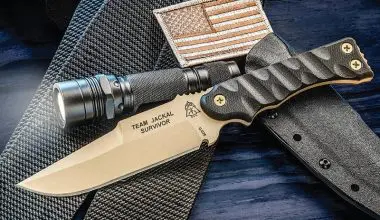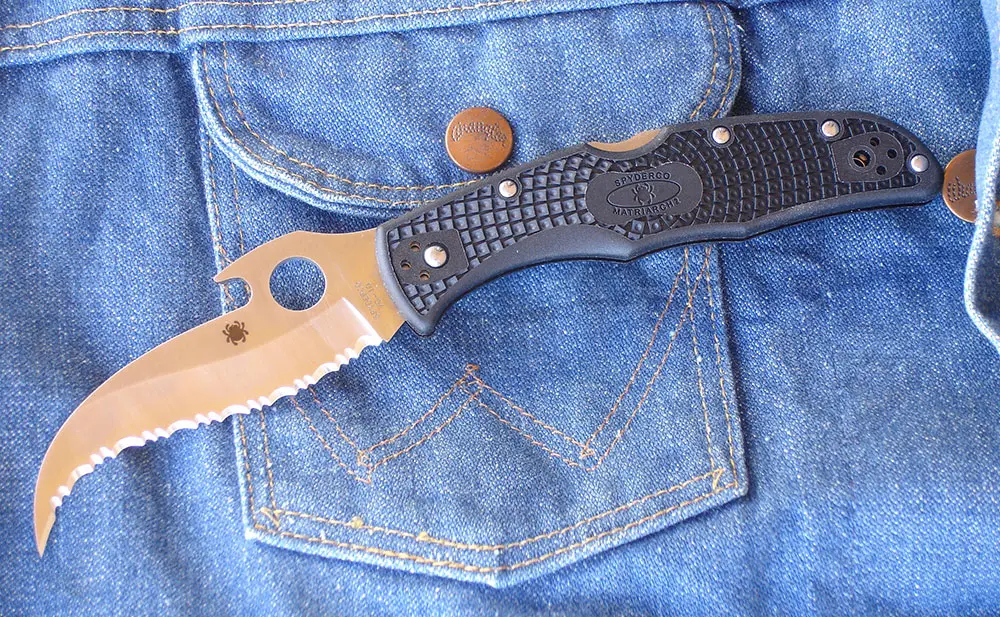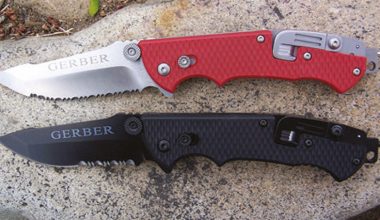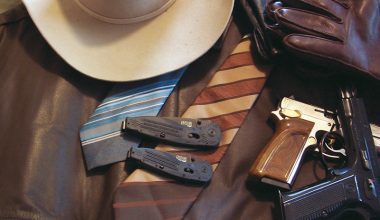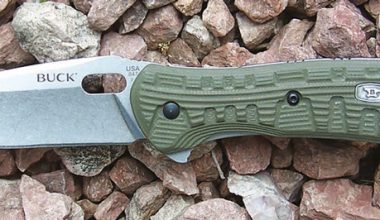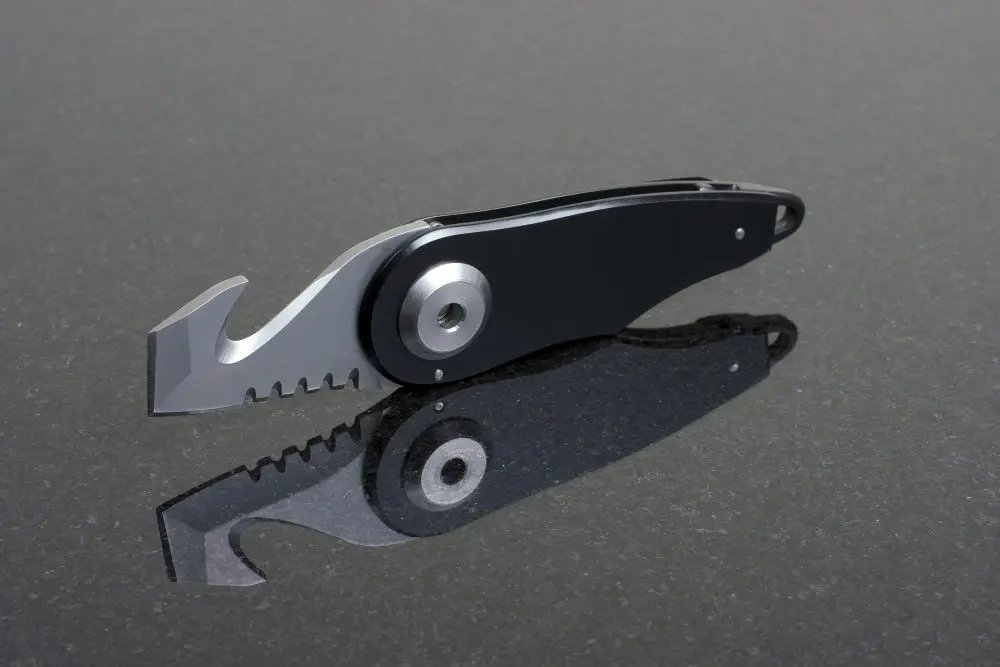Table of Contents
TOMAHAWKS
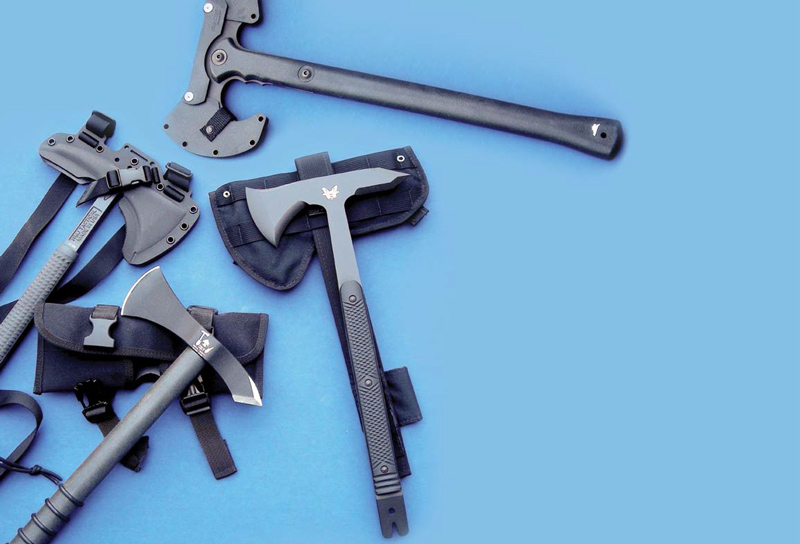
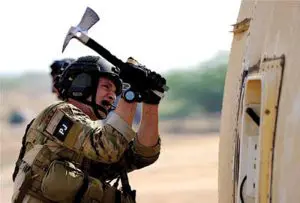
The tomahawk never completely disappeared from U.S. military usage, as individual soldiers found it a useful tool and formidable weapon. In Vietnam, some members of the 101st Airborne Division carried tomahawks that had been personally ordered at company or battalion level. The real resurgence, however, has come in Afghanistan and Iraq during operations in the War on Terror.
I became interested in the topic while working on a book I’m doing on the M9 pistol. I had e-mailed a couple of friends in special ops units to ask how most troops were currently carrying their M9 pistols (drop holsters and Blackhawk STRIKE vest-mounted Serpa holsters seem to be the most popular) and in his reply, one contact mentioned where he carried his RMJ Tactical tomahawk. I started making inquiries with recent returnees from deployment, guys I know who are now deployed, and makers of tomahawks that are sold to the troops. I was impressed with the numbers that appear to be in use.
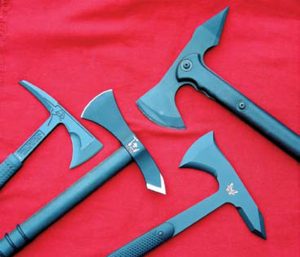
Members of the 101st Airborne in Vietnam fell prey to political correctness (though I don’t think the term was used in those days) when photos of them with their “Hawks” appeared in a national magazine. For those who suffer from political correctness, let me state that tomahawks going to our troops are for use in rescue situations and as light survival tools. OK, politically correct folks, stop reading here.
The current generation of high-quality tomahawks may indeed be used for hacking into or out of a chopper or Humvee, raking glass out of windows, chopping wood for a hide, or puncturing a steel drum, but they are also very effective for chopping up Jihadists at close quarters. Their design makes tomahawks formidable close-combat weapons that can penetrate heavy clothing or AK pouches with loaded magazines to inflict horrendous injuries. A chop to the neck, arm or leg is a great fight stopper.
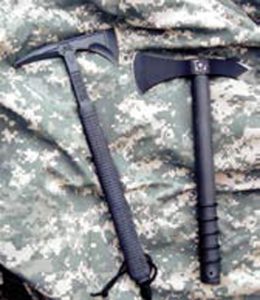
To digress for a moment, when I talked to a couple of USAF Special Tactics guys, one mentioned that the Pararescuemen (PJs) don’t have tomahawks because they have their Pry Fire axes, which look a lot like heavy-duty tomahawks! The Pry Fire ax has a pike blade, ax blade, and metal cutting claw. The PJs use it to get into a downed aircraft if they have to get in to rescue someone, but it will chop or puncture Jihadists just dandy. It really is a tool that works as a weapon in trained hands.
To get an idea of the breadth of units that are using tomahawks, I talked to Richard at RMJ Tactical, which has been backordered for some time due to military orders, about the units that have purchased RMJ tomahawks. He couldn’t go into too much detail, but he did mention various Special Forces Groups, SEALs, Rangers, 10th Mountain Division, Combat Engineers, EOD Units, USAF Special Tactics, 82nd Airborne Division, Combat Applications Group, various National Guard units, and others.
The 10th Mountain Division is worthy of note. I did some training with one of the European Alpine units that has an airborne/special ops mission. They had actually developed some close-combat techniques using their ice axes. Perhaps 10th Mountain thought the tomahawk would make a nice substitute for their climbing axes in the combat zone. In the Hindu Kush, maybe they had both!
Other users Richard mentioned included Homeland Security, DEA, FBI, Secret Service, firefighters, police officers, SWAT teams, and other emergency service personnel. My discussions with the folks at American Tomahawk indicated they are selling to similar customers.
A note on tomahawks for fire and rescue personnel who may have to enter bad neighborhoods and are precluded from carrying firearms: a tomahawk can be a very useful rescue tool—even when it’s you who needs to be rescued!
Here’s an overview of four tomahawks being purchased by military users.
AMERICAN TOMAHAWK COMPANY CQC-T
American Tomahawk is known for producing what they term “extreme use axes” that have a reputation for being very tough. This expertise was combined with Ernest Emerson’s design skills to create the CQC-T. American Tomahawk does not hesitate to state that the CQC-T was designed as a close-combat tool. It has the shortest handle length of the hawks I am discussing, 13 3/4”, and is very fast in the hand when manipulating it. Gripping surface is provided by O-rings positioned on the handle.
The head is of machined 4140 alloy steel and incorporates a chopping edge and a puncturing edge that is broader than on some other hawks. Head length is 7 3/4”. Blade thickness is .200 stock and Rockwell hardness RC 54-55. The CQC-T comes with a nylon sheath that offers versatile mounting to belt or vest via MOLLE attachments. American Tomahawk is set up to take government orders and expedites shipments to deployed troops.
BENCHMADE KILLIAN TOMAHAWK
Designated a “Combat Tomahawk,” Benchmade’s Killian design hawk makes a useful combat utility tool as well as a weapon. Its spike or wedged end makes a good pry tool as well as puncturing weapon, while the ax edge has a 3.5” cutting edge. Blade thickness is .360, which gives sturdiness for heavier chopping tasks. Head steel is 1095 Carbon with Rockwell hardness of 57-60 HRG. The handle is full length with G10 panels that offer a good gripping surface and are nonconductive. At the base of the handle is a notched pry/twist bar. Overall length is 16.25”.
Benchmade’s hawk is designed for tough use and hence weighs 36.8 ounces. Benchmade’s nylon sheath is also versatile and offers various attachment methods including MOLLE. Although the Benchmade hawk will serve quite well as a close-combat weapon, its heavy-duty design also makes it a more versatile tool.
COLD STEEL TRENCH HAWK
Cold Steel’s Trench Hawk offers a heavy-duty hawk at a very reasonable price. At 19 inches overall, the Trench Hawk is the largest of the four hawks under discussion. Its drop-forged 1055 carbon steel head is 8 3/4” with a 3 1/2” cutting edge for the ax portion. This ax edge has a battle-ax type curve that allows it to be used to hook an opponent’s arm or leg in close combat. The Trench Hawk’s spike edge is very aggressive and should allow deep penetration for close combat or utility usage. The Trench Hawk’s polypropylene handle is tough, but keeps the weight down to 24 ounces. The Trench Hawk is balanced for throwing and designed to stand up to such usage. The handle is textured, but I did not find it as non-slip as the other hawks. It incorporates a hole to allow attachment of a lanyard.
The cleverly designed polypropylene Secure-Ex™ sheath pivots to allow the Trench Hawk to be easily drawn. The sheath does not come with a built-in belt loop or MOLLE attachment, and its size will make it more difficult to carry on a belt in any case. Most effective carry for the Trench Hawk will probably be thrust through a strap on the pack.
RMJ TACTICAL SHRIKE
My friend who was the impetus for this article uses an RMJ Shrike and considers it among his primary weapons.
The Shrike is hammer forged with a spike designed to pierce a Kevlar helmet or whatever else an enemy is wearing. The ax head incorporates a second cutting surface designed to allow wicked hooking cuts during close combat. Chrome-moly 4140 steel is used with a full length tang that is over-molded with a hard rubber insulated handle. Overall length of the Shrike is 15 1/2” and weight is 23 ounces.
Designed primarily as a close-combat weapon, the Shrike has a skull-crusher butt cap that unscrews to provide access to a sharpening stone. This is a good feature, as any real estate on a soldier’s equipment that can do double duty is a boon. Handles are available in an array of colors, including desert camo, coyote brown, flat dark earth, OD green, and black.
I was especially impressed with the versatile attachment system of the Shrike for carrying. It can be ordered with a combination of a shoulder strap, which is handy for positioning for immediate usage, belt loops or a MOLLE platform. I recommend ordering all of them and using what fits the mission.
Another very useful RMJ product is a Shrike-type nylon training tomahawk. This allows very realistic close-combat training with the hawk.
Despite its close-combat effectiveness, the Shrike also sees a lot of utility usage. It is considered an excellent “glass raker” by troops using it. For helicopter crew or others working in close spaces or troops who want a Shrike that is easier to carry, RMJ offers the S13 Shrike, which has a 13-inch handle.
The RMJ Shrike is the most expensive of the tomahawks I have discussed here, yet it is backordered for two to four months with military orders. That should say something about how highly the troops value it.
It makes me feel good to know that, along with the high-tech weapons that help our troops fight and survive, there’s still a place for one of the most traditional American close-combat weapons—the tomahawk.
